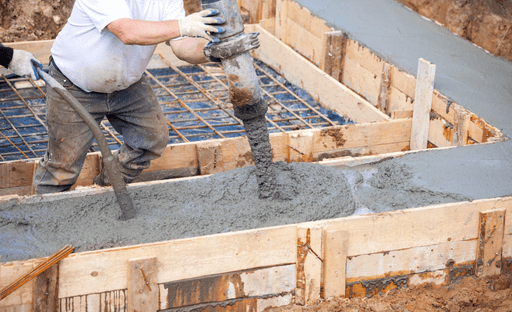Do all houses have foundations 2023
Welcome to our blog article about house foundations! Many people don’t think much about their home’s foundation, but it is an essential part of any structure. In this article, we will uncover the basics of what a house foundation is and discuss the benefits of having a solid one. We will also explore different types of foundations available for your home and provide you with an essential guide to building a strong and durable house foundation. So let’s get started!
When it comes to building a house, the foundation is one of the most important aspects. It’s what holds up your home and keeps it safe from potential damage. But do all houses have foundations? The answer is yes!
No matter what type of house you build, whether it’s a single-family home or an apartment complex, there must be some kind of foundation in place. This could be anything from concrete slabs to piers and piles driven into the ground. Whatever type of foundation you choose for your project, its purpose remains the same: to provide stability for your structure and protect against any environmental hazards like flooding or earthquakes that may occur over time.
Foundations come in many shapes and sizes depending on where they are located geographically as well as how large or small they need to be for their specific application. For instance, if you are building a single-family home in an area with heavy clay soils then you might opt for deep foundations such as caissons or piles driven down into bedrock below grade level; whereas if you were constructing an apartment complex on sandy soil then shallow foundations such as spread footings would likely suffice instead since these don’t require digging too far down into the ground before reaching stable soil layers beneath them which can support heavier loads than those found at surface level alone could handle safely without risk of failure due to settling over time due to changing conditions within their environment (i.e., moisture levels).
In addition, certain types of homes may not even require traditional foundations at all! Prefabricated homes built offsite can often just sit atop precast concrete pads which provide enough stability while still allowing them easy mobility should relocation ever become necessary; meanwhile modular homes will typically use steel frames anchored directly onto existing slab floors already present within whatever space they’re being placed – no additional excavation required here either!
All this goes to show that regardless of where your dream abode is located or how big/small it needs to be – rest assured there are always going available options when choosing what kind(s)of foundational elements best suit its needs now & long-term so don’t let worries about this part stop progress towards making those dreams come true today!
Uncovering the Basics, What is a House Foundation?
Are you curious about the basics of a house foundation? If so, you’re in luck! In this article, we’ll be uncovering the essentials of what makes up a house foundation.
A house foundation is an integral part of any home’s construction and serves as its base support system. It provides structural stability for your home by transferring the weight from the walls and roof to the ground below. Without it, your home would collapse under its own weight!

The type of foundation used will depend on several factors such as soil conditions, climate and budget. Generally speaking, though there are three main types: slab-on-grade foundations (concrete slabs), crawl space foundations (wooden beams) or basement foundations (concrete blocks). Each has its own advantages and disadvantages so it’s important to consider all options before making a decision on which one is right for you.
No matter which type of foundation you choose though, they all have one thing in common – they need regular maintenance to ensure that your home remains structurally sound over time. This includes checking for signs of wear or damage such as cracks in concrete slabs or wood rot in wooden beams/joists etc., ensuring drainage systems are working properly and addressing any water issues that may arise due to poor drainage or excessive moisture levels around the perimeter walls etc..
So if you’re looking into building a new home soon then make sure not to forget about getting an appropriate house foundation too – it could save you lots of headaches down the road!
Discover the Benefits of Having a Solid Foundation
Having a solid foundation for your house is essential to ensure its structural integrity and longevity. It’s the first step in building a safe, secure home that will last for years to come. Not only does having a strong foundation provide peace of mind, but it can also bring numerous other benefits as well!
For starters, having a solid foundation means that your house won’t be susceptible to shifting or settling over time due to changes in the soil beneath it. This can help prevent cracks from forming in walls and ceilings and reduce the risk of water damage caused by leaks or flooding. Additionally, if you ever decide to sell your home down the line, potential buyers will be more likely attracted by knowing that there is an established base already set up for them.

Furthermore, having a strong foundation provides extra protection against extreme weather conditions like heavy snowfall or high winds which could potentially cause damage otherwise not seen with weaker foundations. And since most foundations are made out of concrete – one of nature’s strongest materials – you know you’re getting maximum strength when building on top of it!
Overall, investing in quality construction materials now can save you money (and headaches) later on down the road – so don’t skimp out when laying down those first few layers!
What Types of Foundations Are Available for Your Home?
When it comes to building a home, the foundation is one of the most important elements. It’s what keeps your house standing strong and sturdy for years to come. But did you know that there are several types of foundations available? Depending on your needs and budget, you can choose from concrete slabs, crawl spaces, basements or even piers.
Concrete slabs are probably the most common type of foundation used in homes today. They’re relatively easy to install and provide a solid base for your house structure. Crawl spaces offer more flexibility than concrete slabs as they allow access underneath the flooring for plumbing or electrical work if needed later on down the line. Basements provide additional living space but require more excavation work than other options do – so keep this in mind when making your decision! Finally, piers are an option if you live in an area with high water tables or soil conditions that make traditional foundations difficult to build upon; they’re also great if you want extra storage space below ground level without having a full basement built out!
No matter which type of foundation best suits your needs, it’s important to remember that all houses need some kind of support system beneath them – whether it be a concrete slab or something else entirely! So take some time researching different options before committing yourself financially – after all, this is likely going to be one of the biggest investments you’ll ever make into protecting both yourself and those around you from potential disasters like floods or earthquakes!
The Essential Guide to Building a Strong and Durable House Foundation
Are you looking to build a strong and durable house foundation? If so, then you’ve come to the right place! In this essential guide, we will provide all the information you need to know about constructing a solid base for your home.

First of all, it is important to understand that not all houses require foundations. Some homes are built on stilts or other raised platforms which can be just as effective in providing stability and support. However, if your goal is to have a sturdy structure that will last for years then building a foundation is highly recommended.
The most common type of foundation used today is concrete slab-on-grade construction which involves pouring concrete over an area of soil or gravel before reinforcing it with steel rebar and allowing it time to cure properly. This method provides excellent strength and durability but also requires more effort than other methods such as pier foundations or crawl space foundations which involve setting posts into the ground instead of pouring concrete directly onto it.
No matter what type of foundation you choose for your home, there are some key steps that should always be taken when constructing one: make sure the site has been cleared away from any debris; check local building codes; ensure proper drainage by installing gutters around the perimeter; use quality materials like reinforced steel bars; hire experienced professionals who can help with installation if needed; test soil conditions before starting work on site; allow plenty of time for curing after completion – usually at least 28 days depending on climate conditions. All these steps must be followed carefully in order for your house’s foundation to remain strong and durable over time!
Are There Houses Without Foundations?
Have you ever wondered if it’s possible to build a house without a foundation? Well, the answer is yes! Believe it or not, there are houses that don’t require foundations. This type of construction is known as ‘floating’ and can be used in areas where soil conditions make traditional foundations impractical or too expensive.
Floating homes are typically built on large platforms made from steel, concrete or wood. These platforms provide stability and support for the structure while also allowing them to move with the water below them. The design of these homes varies greatly depending on their location and purpose but they all have one thing in common: no traditional foundation required!
So how do floating homes stay afloat? They rely on buoyancy provided by either air-filled tanks beneath them or pontoons filled with foam insulation material which helps keep out moisture from entering into the home’s interior space. Additionally, most floating structures are secured to pilings driven deep into the ground below so that they remain stable even during storms and high winds.
The idea of building a house without a foundation may seem strange at first but there are many advantages associated with this type of construction including cost savings due to reduced labor costs since no excavation is required; increased flexibility when relocating; improved flood protection; less disruption caused by vibrations from nearby traffic; and finally, an overall reduction in environmental impact since fewer materials need to be transported for construction purposes.
So if you’re looking for an alternative way to build your dream home then consider going ‘floating’ – you won’t regret it!
Finally, remember that having an expert inspect both during construction (to make sure everything was done correctly) as well as afterwards (to identify any potential problems) can save you lots of money down the line – so don’t forget this important step either! With these tips in mind, we hope our essential guide has helped give you some insight into how best to construct a strong and durable house foundation – good luck with yours!






